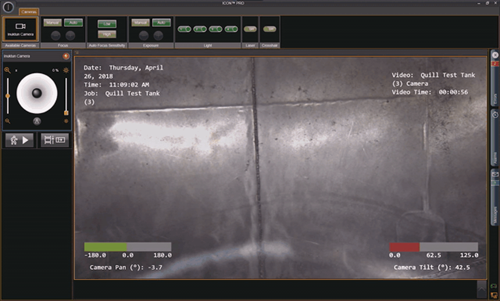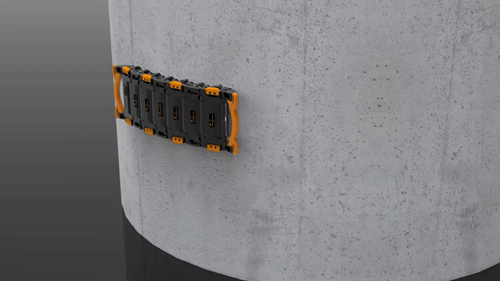Certifying the structural integrity of pressure vessels is not only mandatory from a regulatory perspective, but also imperative for both human and environmental safety — yet the pursuit of fitness-for-service certification carries its own risks when performed by direct human intervention. Factors such as temperature, toxicity, and confined or inaccessible spaces are common in pressure vessel inspection applications in the petrochemical, nuclear, and oil and gas sectors.
According to one study, rising concerns for labor safety are increasing the global mobile robotics market growth rate, a CAGR of 18.6% to 2025.
Eddyfi Technologies’ robotic solutions are designed and manufactured to withstand the hazards associated with pressure vessels, and the Magg™ miniature magnetic crawler offers the ideal solution for eliminating confined space entry (CSE) and allowing detailed remote visual inspection (RVI) of locations otherwise unreachable. Arguably one of the most popular inspection robotic crawlers in the industry, the Magg offers a 360° continuous tilt camera with full 1080p video and 10x optical zoom. The confined space robot includes 100 meters (or 330 feet) of tether and a portable control system with still image capture, real-time video recording, and the ability to flag multiple regions of interest instantly. Camera laser lines and high intensity LED spot and flood lights allow for investigation of pressure vessel head nozzles, expansion joints in transfer lines, visible flaws, and any surface breaking defects. The Magg enables risk assessment of critical factors such as design, cyclic fatigue, and product induced corrosion, as well as locating suspect areas internally for additional analysis – all while keeping humans safe from working at heights, i.e., no scaffolding or rope access required, nor entering confined spaces. The use of Eddyfi Technologies robotics translates to tremendous reduction of work-related health and safety risks, less downtime of the pressure vessel, and lowered costs during turnarounds. Check out our eBook on robotics for NDT data collection here.

Less downtime is great, but whenever people can avoid opening a vessel (read: not mandated by regulations), Non-Intrusive Inspection (NII) will always be the preferred choice.
Much like its seeing eye counterpart, the RMS PA is a phased array corrosion mapping automated scanner that offers the same advantages of remote access and increased productivity. For a complete pressure vessel inspection, a simple change of probes enables operators to map corrosion on the shell, perform Time-of-Flight-Diffraction (TOFD) on welds, and manual Phased Array Ultrasonic Testing (PAUT) for flange face and nozzle welds. This in-service inspection collects PAUT and/or Total Focusing Method (TFM) data in real time through Capture™ software embedded on Eddyfi Technologies’ portable PAUT instruments, Gekko® and Mantis™. Compared to conventional UT, the RMS PA can inspect 10 times faster while offering 100% corrosion mapping coverage. Discover the efficiency of PAUT for corrosion mapping here. The post-process analysis capabilities of Capture empower superior condition monitoring and proactive asset health management programs; see how Capture offers the complete toolbox for TFM inspections here.
What about those steel legs supporting Horton sphere pressure vessels? Typically safeguarded in concrete or another fireproofing material to prevent failure in the event of a fire, these structures are still susceptible to water ingress that could encourage corrosion potentially left unseen until it’s too late. Pulsed Eddy Current (PEC) has been used to combat the Corrosion Under Fireproofing (CUF) plague in the past. The Lyft® by Eddyfi Technologies changed the game in 2018 with the introduction of the first PEC Array (PECA™) probe offering 100% coverage inspection without the need to remove fireproofing. The efficient screening tool provides a comprehensive report to track defects before they result in catastrophic consequences. Learn more about PECA having legs over CUF here. When deemed necessary and the fireproofing removed for a closer look, the R-Scan Array is the complementary handheld PAUT scanner to further assess problematic areas.

Three certainly isn’t a crowd in our books when it comes to something as important as the asset health monitoring of critical assets like pressure vessels. Employing RVI, PAUT/TFM, and PECA offers a comprehensive look inside out with the repeatable, actionable, meaningful, and preventative data required to optimize your risk management program. Contact our friendly and knowledgeable experts to learn how our advanced NDT solutions can help you save time and money, reduce risk, and provide data results you can trust!





.png)